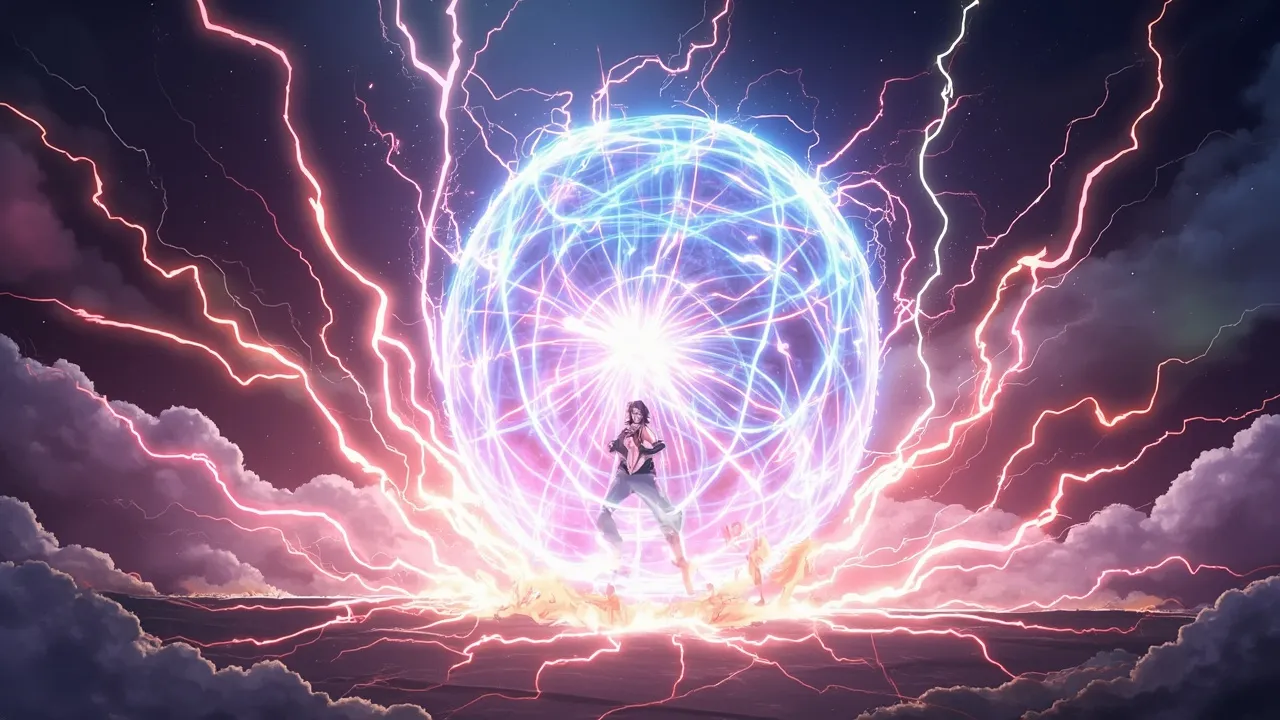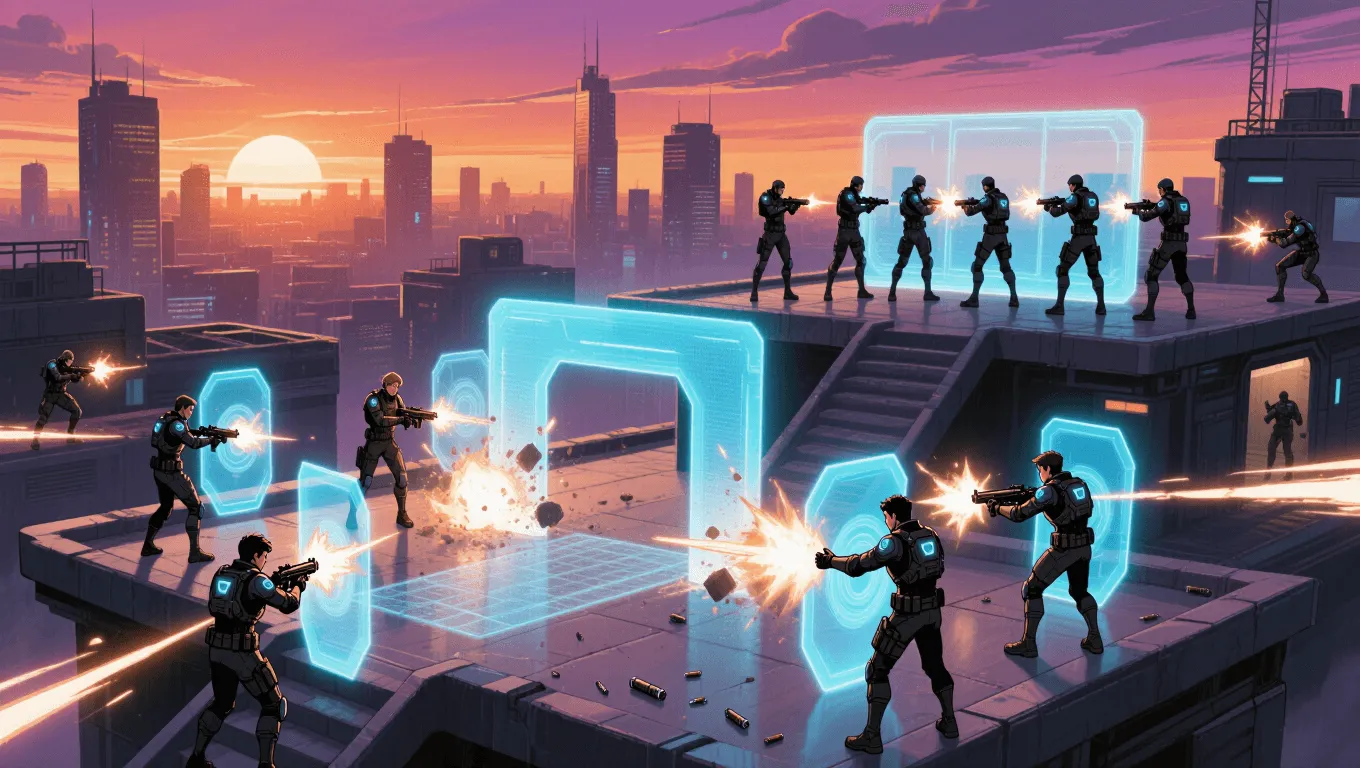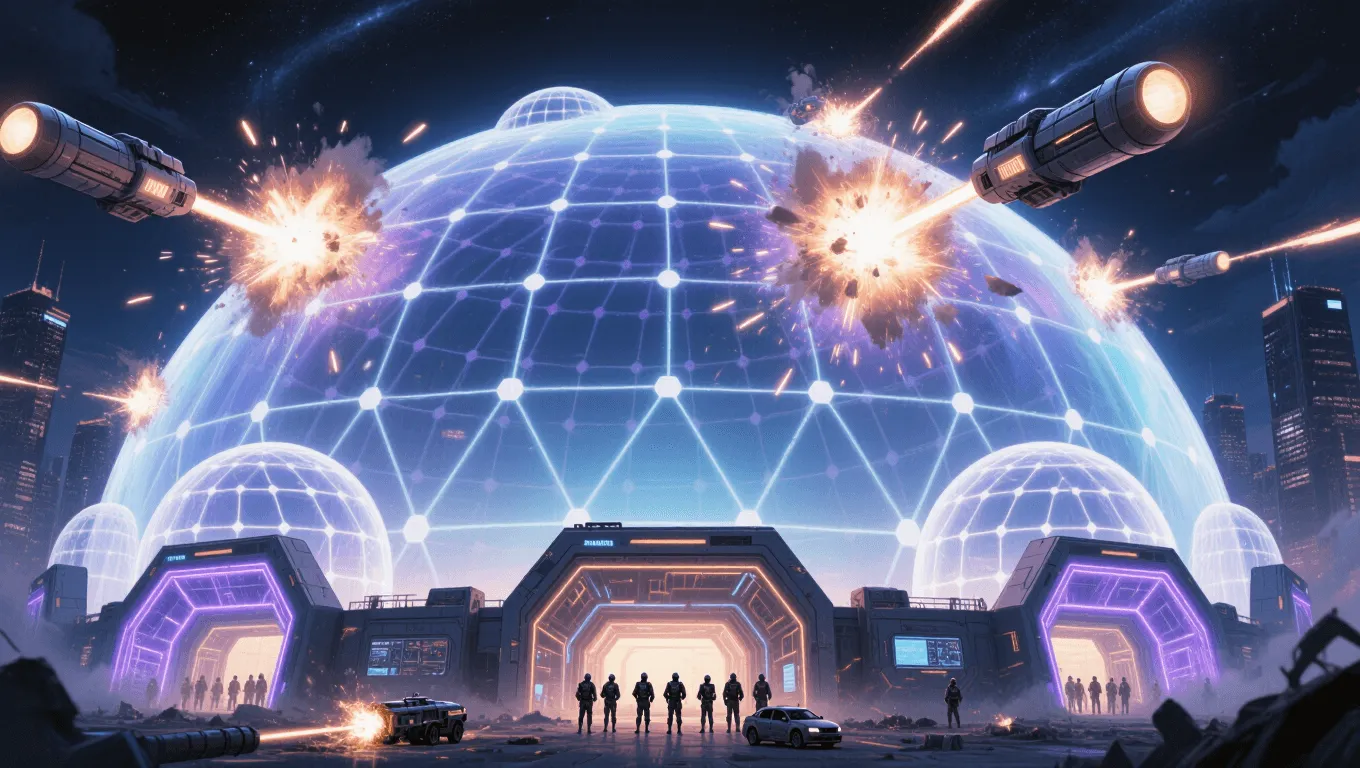Energy Shield

Energy Shield Video Demo 🎬
Table of Contents
- Energy Shield Video Demo 🎬
- What Is Energy Shield
- Core Abilities of Energy Shield
- Application / Tactical Advantages in Combat
- Level: Level 1 🏙️, Level 2 🌇, Level 3 🌃
- Limitations of Using the Energy Shield
- Weakness Against What Other Superpowers
- Synergistic Power Combos
- Known Users
- Additional Keywords and Phrases (for clarity)
Energy Shield is a defensive superpower that creates a protective field of energy around a person, object, or area. Depending on the user, this field may look like a transparent bubble, shimmering hexagons, a crackling aura, or a hard-light pane. As a staple in superhero fiction, Energy Shield appears under many names—force field, kinetic barrier, plasma shield, barrier generation—but the goal is the same: prevent harm while shaping the battlefield. For more powers like this, explore the complete superpower list or try a new idea with the random superpower generator.
What Is Energy Shield
Energy Shield is the ability to project and sustain a field that blocks or reduces incoming damage. The field can be static (a stationary wall), personal (a body-hugging aura), or environmental (a dome that covers a team or a base). Mechanically, the shield converts, disperses, or redirects energy—kinetic, thermal, electrical, sonic, or even mystical—into a safer form. Some advanced users can shape the barrier into tools: bridges, domes, platforms, or wedges that double as battering rams.
In worldbuilding terms, Energy Shield provides strong narrative levers:
-
It sets time limits (“hold until evac”), strategic tradeoffs (defend vs. attack), and visual cues (cracks, flares, dimming).
-
It balances glass-cannon attackers, allowing them to stay in the fight.
-
It creates set-pieces—last stands, bubble sieges, or mobile escorts.
Core Abilities of Energy Shield
1) Damage Mitigation
At its simplest, the field reduces damage from bullets, shrapnel, blasts, and falls. The mitigation rate depends on the shield’s thickness, power source, and user skill. Common models include:
-
Flat Reduction: Cuts a fixed percentage from all hits.
-
Threshold Gate: Negates small hits entirely but fails against massive strikes.
-
Diminishing Pool: A visible “HP bar” that depletes as damage accumulates.
2) Directional and Shaped Barriers
Skilled users shape barriers into walls, domes, ramps, or interlocking tiles. Directional shielding is crucial in firefights, letting the user block arcs while keeping other angles open for allies.
3) Energy Absorption and Redirection
Some versions don’t just block—they absorb heat, radiation, or kinetic force, converting it into power or storing it. That stored energy can be vented to cool the field, channeled to heal allies, or released as a shockwave.
4) Deflection and Reflection
A tuned field can deflect projectiles by angling its surface, or reflect beams back at the attacker. Reflection usually costs more energy and demands precise timing.
5) Environmental Control
Energy Shields seal environments against vacuum, pressure, toxins, or pathogens, enabling short-term life-support or quarantine. Advanced users filter air, buffer sound, and regulate temperature inside the dome.
6) Hard-Light Constructs
Some practitioners compress their field into hard-light tools—plates, blades, braces, and braces. This merges defense with utility: bridges over gaps, platforms for vertical movement, or clamps that pin enemies without lethal force.
Application / Tactical Advantages in Combat
-
Frontline Anchor: A portable wall lets teams advance under cover or hold chokepoints. Rotating shields between teammates prolongs survivability.
-
Counter-Snipe Defense: A personal barrier blunts first-contact ambushes, giving time to locate the shooter.
-
Blast Sponging: Against explosives or energy cannons, a layered dome absorbs the worst, preventing cascading casualties.
-
Area Denial: A flattened shield slab blocks corridors, doorways, or skylanes. Angled plates can channel enemies into kill-boxes.
-
Mobility Platform: Hard-light steps and platforms enable flanking routes, rooftop access, and quick extraction.
-
Nonlethal Control: Encapsulating a target in a bubble isolates and de-escalates without permanent harm.
-
Rescue and Containment: Shields stabilize burning rooms, hold collapsing debris, or form temporary levees against floods.
Level: Level 1 🏙️, Level 2 🌇, Level 3 🌃
Level 1 🏙️ — Initiate Shieldbearer
-
Scope: Personal aura or small buckler-sized pane.
-
Durability: Stops light projectiles, glancing blows, and minor blasts; cracks under sustained fire.
-
Uptime: Seconds at a time; noticeable cooldown. Fatigue after a few uses.
-
Control: Basic shapes (disc, bubble). Limited movement while active.
-
Tactics: Emergency defense, quick peeks, and rescue cover for one ally.
-
Training Focus: Breath-linked activation, conserving output, learning when to block vs. dodge.

Level 2 🌇 — Field Architect
-
Scope: Tall walls, squad domes, stair-step platforms.
-
Durability: Handles automatic fire, grenades, moderate energy beams; resists melee brutes but not their heaviest hits.
-
Uptime: Minutes with proper pacing. Can run multiple small shields or one big barrier.
-
Control: Directional shielding, interlocking tiles, partial transparency for visibility.
-
Advanced Features: Limited absorption (kinetic dampening), basic reflection vs. narrow beams.
-
Tactics: Chokepoint control, offensive pushes under mobile cover, rooftop ingress/egress.
-
Training Focus: Angle management for deflection, energy routing, team coordination.

Level 3 🌃 — Aegis Master
-
Scope: City-block domes, micro-thin hard-light constructs, rapid reconfiguration.
-
Durability: Withstands artillery, starship-class beams (briefly), or superhuman shockwaves; still finite under constant siege.
-
Uptime: Sustained operation with efficient cycling; modular layers with automated repair routines.
-
Control: Fine sculpting—windows, vents, sound baffles, pressure seals, and force-vector geometry.
-
Advanced Features: High-efficiency absorption with storage; controlled discharge as shockwaves; selective permeability (let allies fire out).
-
Tactics: Strategic sieges, disaster relief, environmental sealing in space or deep ocean, crowd protection at scale.
-
Training Focus: Algorithmic shaping, predictive interception (anticipating trajectories), live triage between layers.

Limitations of Using the Energy Shield
-
Finite Battery or Stamina: Most versions draw from a power core or the user’s bioenergy. Long sieges cause exhaustion or overheating.
-
Thermal Build-Up: Even if a beam is blocked, heat accumulates. Without venting or coolant channels, the shield or user cooks.
-
Line of Sight and Focus: Many users need to see where the shield goes or maintain concentration. Distractions, pain, or sensory overload degrade coverage.
-
Coverage vs. Thickness Tradeoff: Bigger domes are thinner. A compact buckler is strongest but protects less area.
-
Backscatter and Ricochet Risks: Reflections can endanger allies if angles are sloppy. Deflection requires spatial awareness.
-
Harmful Interference: Certain energies—null fields, magic dampeners, entropy waves—can destabilize the matrix, causing fizzles or catastrophic collapse.
-
Latency: Flicking a shield on takes milliseconds to seconds. In close quarters, a faster attacker can slip through during activation lag.
-
Maintenance Windows: Large, layered shields need repair cycles. If the enemy times a push during a rebuild, gaps appear.
Weakness Against What Other Superpowers
-
Power Nullification / Anti-Magic: Suppressors shut down projection or sever the energy link entirely.
-
Phase Shift / Intangibility: Phasing bypasses surfaces. The best counter is layered fields tuned to disrupt phase boundaries.
-
Reality Warping / Entropy Manipulation: These don’t “hit” the shield; they alter its rules. Expect sudden collapse or inversion.
-
Precision Teleportation: Bypasses area denial by skipping inside the dome.
-
Vibration / Sonic Resonance: Matching the shield’s frequency can shatter it like glass. Sonic and seismic manipulators excel here.
-
Drain/Leech Powers: If the shield stores energy, a leech can siphon it, weakening protection or turning it against allies.
-
Corrosive/Acidic Energies: Certain chemical or eldritch effects eat lattices over time, forcing constant reinforcement.
-
Swarm Tactics: A flood of micro-attacks can overload processing; even if each hit is minor, they fill the queue faster than the user can respond.
Synergistic Power Combos
-
Telekinesis + Energy Shield: TK stabilizes plates midair, rotates angles for ricochet shots, or holds debris against the wall to fortify it.
-
Elemental Control + Shielding: Fire or lightning trapped inside a dome turns it into an oven or Tesla cage. Water control adds coolant channels against heat build-up.
-
Precognition + Shielding: Foresight places walls before attacks land, massively boosting efficiency and minimizing latency gaps.
-
Speedster + Hard-Light Platforms: Sprinters use midair steps for aerial routes; the shield user lays the path in real time.
-
Healing + Barrier: Medics operate safely under a dome. Selective permeability lets allies pass while contaminants stay out.
-
Gravity Manipulation + Shielding: Increased local gravity “presses” the dome against the ground, discouraging tunneling and anchoring against knockback.
-
Technology Integration: Smart shields tie into HUDs and drones. Sensors pre-tag threats and auto-spin plates to ideal deflection angles.
Known Users
-
Invisible Woman (Susan Storm): A hallmark barrier wielder known for domes, platforms, and hard-light constructs. See her official profile at Marvel.
-
Green Lantern (Hal Jordan): Constructs and protective fields powered by will, frequently used for space survival and crowd-scale shielding. Learn more at DC.
-
Armor (Hisako Ichiki): Projects a psionic exoskeleton that functions as a highly durable personal barrier. Reference at Marvel.
-
Captain America (Energy Shield variants): In some continuities and tech upgrades, uses energy-based shields capable of absorption and projection; consult relevant comic arcs and databooks.
-
Generic Sci-Fi Wardens: Many franchises field “deflector shields” and “kinetic barriers” for ships, mechs, and bases, demonstrating large-scale dome applications and layer cycling.
Additional Keywords and Phrases (for clarity)
Energy barrier, force field generation, kinetic dampening, beam reflection, deflector shield, damage reduction, protective aura, hard-light platform, containment bubble, selective permeability, absorption and discharge, tactical dome, barrier shaping, environmental sealing.
For more entries like Energy Shield, browse the evolving Superpower Wiki. If you’re brainstorming a new hero or loadout, spin up an idea with the random superpower generator.
